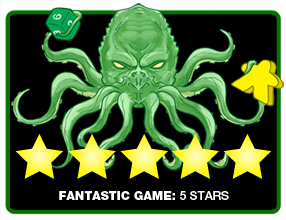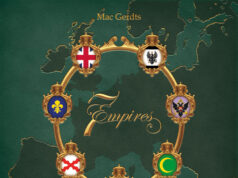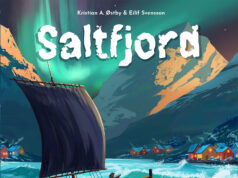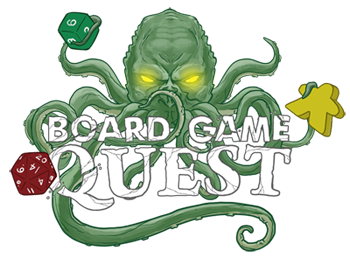 Let’s get the first question answered up front: how do you say the name of this game? Well, “Wir Sind das Volk!” is pronounced like this: Veer Zint Dahss Folk. And it means “We Are the People!” How do I know this? Well, I studied all things German: Language, History, Political Science, and Art, and I did so in a place called West Berlin in 1988, which was surrounded by a large, heavily guarded Berlin Wall (Capital B, Capital W). About a year after I left, and maybe you’ve heard this before, that Wall came down, and West Berlin just became the western half of Berlin. Which was pretty funny because in my German Poly Sci classes, we had been told the “German Question” (Capital G, Capital Q) of how to reunite Germany was never going to be solved. Surprise!
Let’s get the first question answered up front: how do you say the name of this game? Well, “Wir Sind das Volk!” is pronounced like this: Veer Zint Dahss Folk. And it means “We Are the People!” How do I know this? Well, I studied all things German: Language, History, Political Science, and Art, and I did so in a place called West Berlin in 1988, which was surrounded by a large, heavily guarded Berlin Wall (Capital B, Capital W). About a year after I left, and maybe you’ve heard this before, that Wall came down, and West Berlin just became the western half of Berlin. Which was pretty funny because in my German Poly Sci classes, we had been told the “German Question” (Capital G, Capital Q) of how to reunite Germany was never going to be solved. Surprise!
In Wir Sind das Volk! (WSdV! for short) designers Peer Sylvester and Richard Shako (who uses the pseudonym Richard Sivél when he designs games) tell the story of how Germany went from being hopelessly split to reunited (and it feels so good) over the course of just over four decades from 1945 to 1989. The game was originally published in Germany by Histogame, a small publisher run by Shako, who along with Friedemann Bochow also provided the game’s artwork. After a decade of being a cult classic you had to import from Germany, WSdV! is now available in the United States through Rio Grande Games. Depending on your perspective, it will be a wargamer’s favorite Euro or a Eurogamer’s favorite wargame. Either way, it’s a glorious game you really have to try.
Gameplay Overview:
This game has an estimable pedigree. Sylvester has given us many games, including Brian Boru: High King of Ireland and The King is Dead (known to some by its original name: König von Siam), which explore different action mechanisms in the context of area control games. Sivél designed Friedrich and Maria, two wargames in which players switch sides in the middle of the game, fight on both sides of the same war, and other quirky aspects that place them among the most innovative wargames in recent memory. WSdV! fuses these two traditions together to create a War Game that feels like an area-control, route-building Euro game with a deeply infused theme or, alternatively, a medium-weight CDG (a card-driven wargame) with a strong Euro feel. But don’t get into a fight over whether it’s one or the other: it’s both!
Here’s the case for it being a CDG (with a dash or two of COIN – Counter Insurgency – games tossed in as well). Each of the game’s two players takes one side in the Cold War struggle between East and West Germany. At the start of each of the game’s four “decades” (each split into two half-decade rounds) players receive two hidden cards, plus they share a common flop of seven cards, on top of which the East Germany player has an optional eighth event card it can play, if it’s willing to discard one of its two other cards or to let the West German player draw another card. Every card has an event it can trigger, sometimes for the East, sometimes for the West, sometimes for both, or the card can instead be used for a small number of basic actions, such as adding a factory or removing political unrest in a region. All of this sounds like it could be a variant of a CDG, with only one side getting a Home Card and subbing in shared cards for the larger private hands common in CDGs.

In fact, if I had to point to any single game that WSdV! reminds me of, it would be a CDG: Twilight Struggle by Ananda Gupta and Jason Matthews, which spent a significant amount of time as BGG’s most highly rated game and has now settled in as number 14. Both games cover the Cold War. And both feature a sort of war without actual battles, with Twilight Struggle focusing on coups, political realignments, and brinksmanship, while WSdV! focuses on two spaces of the Twilight Struggle board, East and West Germany, and involves a deeper dive into the battle over prestige, economic growth, and living standards that Twilight Struggle abstracts away into putting influence points into one or the other half of Deutschland.

Ok, but here’s the case for it being a Euro. If you treat everything in the game as flavor text, so that the map becomes an abstract network of nodes and the cards are simply reduced down to their event effects and operation points/actions, the game screams out that it is an efficiency Euro. West Germany is trying to build up its economic resources to create an engine that spits out unhappiness for the East German. East Germany is itself trying to build an engine that generates committed Socialists who spurn Western decadence like Color TVs and World Cup Soccer.
Both sides are trying to connect their industrial centers to get synergies (every factory linked to another factory means both grow in value) while finding room to use a card or two to slow down the other player. Imagine Thurn und Taxis, but you can trash the other player’s postal routes or Hansa Teutonica II: Bloodbowl Edition.

West Germany has started to link up its southern factories resulting in a higher productivity level (2+3=5) in Baden-Württemberg, but in Bavaria (Bayern) it’s going to be hard to maintain that high standard of living (2 hex tokens) with a Mass protest looming (3 cubes out of 4) and a factory level of just 2.
Game Experience:
Ok, enough poetic wax, let’s get down to how the game works. The game has 8 total rounds, each representing half of a decade. Each of the four decades has a separate deck, and players can each carry as many as 2 cards over from past decades to the next, but usually you’ll want to use all your private cards if they are good or discard them if they aren’t. The player with the most international prestige goes first in the first half of the decade (this is West Germany when the game starts), but players jockey to see who starts the second half of each decade by trying to force the other player to take the last public card.

Each decade, the East German player also has access to a special card that is powerful but double-edged. This card can be played by discarding one of the East’s two private cards or by allowing the West German to draw an extra private card. The most iconic of these cards is from Decade II (the 1960s) when the East German player has to decide whether to build the Berlin Wall or not.
If The Wall goes up, citizens can no longer flee to West Berlin to escape the East Bloc, but international prestige and industrial capacity degrade at the end of each decade thereafter. And, in Decade IV (the 1980s) this choice will mean the Ossie (as West Germans called the Easterners) has a different special card, with different options if there is a Wall or not.
Players alternate card play, choosing a public card or one of their two private cards, and then choosing to use the Event (if it is reserved for their power or both powers) or to do a standard operation (any card – other than East Germany’s special once-a-decade card) can be used this way, even an opponent’s event).

A big part of the game is assessing whether your good events are more important to trigger than using your turn to take away one of your opponent’s events by using the card yourself for operations points. The public nature of the majority of the cards (7 shared public cards in each of two half-decades versus 2 private cards for each player per decade) creates a lot of more tension. You’ll really want the benefit of an economic boom from West German automobile manufacturing but you also don’t want to let the East German hit you with terrorist attacks from the Red Army Faction that add a ton of unrest, which boosts East German prestige by comparison.

The success or failure of your efforts comes to light at the end of each decade, when the players go through a series of comparisons of their respective economies, international prestige, levels of political unrest, standards of living, and for the East German, whether it has enough hard currency to pay for everything it has built up.
This is the one part of the game that may take a bit for a new player to truly internalize, and it is where all of the interlocking pieces come together. Underneath the hood, there is a lot going on here, as one BGG user showed with his breakdown of the game into a schematic:

But the thing is, you don’t really need to know all this to get started learning the game. So yes, for mastery, you are going to want to know every possible impact of every decision. But at first, I would encourage new players to be willing to play suboptimally. Explore how the game rewards good play and punishes bad play as it forces you to choose among tough choices, all of which are good and bad. I just adore it.

The end of each decade is where all your chickens come home to roost. Negative consequences can cascade into serious political crises, with factories being dismantled to pay for goods, leading to being unable to support the existing standard of living, which in turn can lead to Mass Protests. If either power has 4 Mass Protests across their regions (including the possibility of multiple protests in the same region if things are bad enough), the other side wins. If both players have 4 or more mass protests, East Germany wins, under the well-known rule adage that “ties go to the commies.” East Germany can win an automatic victory if it has managed to generate 13 dedicated Socialists, while the West can win if it’s managed to drive East Germany down to zero Socialists and then they are required to surrender one more.
If East Germany is doing well, it has managed to keep the costs of its economy manageable, it isn’t dismantling factories or letting them run down, and it has enough police power and die-hard Socialists to quell any dissent. Then it can maybe go on the offensive, creating unrest in the West. For West Germany, success involves creating a vibrant economy that generates high standards of living without too much political discontent, so that the East Germans look over The Wall longingly and begin to lose faith in their Marxist-Leninist paradise.
As an added bonus, the game is available for free online at the fabulous Rally The Troops website. It’s not a pure substitute for the tense face-to-face confrontation over a table, but for getting in your reps needed to master this game, it’s a great complement to the physical game.

Is the game perfect? It’s darn close, but if I could change anything, I would make a few different graphical choices. To be clear, I love the artwork itself, which conjures up the feel of the Germany I knew in the 1980s.
The icons, once you learn them, are fine and make it easy to play without consulting the rules. But there are a few counterintuitive elements that take a bit to get used to.For example, events that are good for the Socialists make that track go to the right (when we all know they are leftists)— a decision that was made because they are also to the East, which is right on the map. I think I’d have stuck with “lefty loosy” on this one.

I also wish they’d made it a bit easier to tell which cards are East-only vs. West-only vs. dual-use. The mixed ones have red text, which distinguishes it from the cards whose events are only usable by one side or the other, but the main way we’re supposed to tell is because the artwork is red on East German cards and is yellow on West German cards, and is a mix of red and yellow for the dual-use cards. Using three colors of text (and keeping red consistently reserved for the commies) would have solved this.
Final Thoughts:
The first time you play as West Germany, you’ll swear the game is rigged so only East Germany can win. The first time you play as East Germany, you’ll swear the game is rigged so only West Germany can win.
It turns out it’s rigged so neither side can ever win—unless they find the sweet spot of efficiency where nothing is allowed to get too out of control, but where resources are always directed at the most pressing crisis, aiming to keep any one pot from boiling over. Even allowing one or two Mass Protests to linger might be ok if you can be sure they won’t grow to the four that will result in a loss at the end of the decade. I’ve played about 20 times, I’ve won about 5, and yet I cannot get enough of the struggle. When you’re bad at a game and still adore it, it’s true love.
I really do think it is just as valid to call Wir Sind das Volk! a Euro disguised as a wargame as the other way around, but it will be a much easier sell to someone who already knows and enjoys games like Twilight Struggle, which most hobbyists would identify as a wargame. So don’t oversell this as a Euro to your Feld- or Rosenberg-loving friends, but if you have friends who love heads-down Euro efficiency puzzles and think they’d be willing to mix in some serious (albeit negative) player interaction, this could be the wargame they finally like.
Final Score: 5 Stars – Fünf (5). Heck, maybe even Sechs!
 Hits:
Hits:
• Combines the best of CDG wargames with puzzly Euro networking games.
• It tells a fabulous story of the Cold War in Germany.
• Try before you buy at the fabulous Rally The Troops gaming website.
• OMG, I can’t stop playing this!
Misses:
• Graphical elements can take a little getting used to.
• If you insist on understanding every interlocking mechanism of the game before you try it, you may struggle to get started.
• From the outside, it’s not obvious that Eurogamers will love it too, so it might be harder to get them to try it out.
Note: The version currently available in the United States (which I was provided for this review) is the “Combined Edition,” which also comes with an expansion built in, called 2+2. This lets you add two more players, the United States and the Soviet Union, and you play as teams (USA+West, USSR+East) where teammates’ goals overlap imperfectly and ultimately only one player can win. The 2+2 expansion is not available online, which is another great reason to buy the physical game. I’ve not yet had the chance to dive into this, but I cannot wait to find three other local WSdV! fans so I can explore this offering as well. But even if I never crack open the additional deck of cards that comes with 2+2, I would still consider Wir Sind Das Volk! to be my game of 2025 (so far) with such a cushion over the next best offering that we might as well call off the fight now.






















I love this game! I think if the red arrows pointed left it would be more confusing to players, but other than that I have no disagreements with this review whatsoever.
I am really pleased to see you enjoyed this.
As an addendum and if you don’t mind: the game can also be enjoyed solitaire, both in and of itself and the expansion, 2+2. I wrote a mode and published it on the BoardGameGeek forums.
cool! I’ve played 2-handed against myself on RTT, but I’ll check out your solo mode